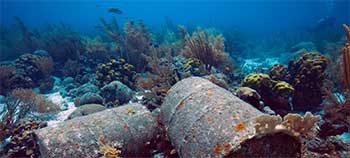Scientists Find A New Model to Probe How Black Holes Rip Apart Starts
Why in NEWS?
- Scientists have found a new way to probe into supermassive black holes – detecting their properties like mass and spin by observing how they rip apart stars.

ABOUT
- Scientists have found a model which can infer black hole mass, its spin by observing how the stars are ripped apart on coming to the vicinity of these astronomical bodies with high gravitational force found at the centre of some massive galaxies.
- Stars are disrupted when the black hole's tidal gravity exceeds the star's self-gravity, and this phenomenon is called tidal disruption events (TDE).
- This model, which can be applied after the star is observed to be tidally disrupted, and an accretion disk is formed, will help in expanding our understanding of the physics besides building valuable statistics of the black hole mass and stellar mass.
- Supermassive black holes govern the movement of stars orbiting within their gravitational potential, and their tidal forces can disrupt or rip apart the stars that come to their vicinity.
- Scientists from the Indian Institute of Astrophysics (IIA) who had earlier calculated the rate of disruption and its statistics, focused on the observations of a given stellar disruption event (TDE) in their new study and inferred the black hole mass, star mass, and the point of closest approach of the star's orbit.
HOW IT WILL WORK
- This time-dependent model simulates the luminosity, which along with the capture rate of stars for tidal disruption, black hole demographics (population distribution of black holes in the Universe), and instrument specification of survey mission, results in the expected detection rate of TDEs.
- By comparing the expected detection rate with the detection rate from observation, one can probe into black hole demographics. The fits to the observations yield parameters of the star and the black hole that are useful for the statistical studies and build the demographics of black holes.
CONCLUSION
- The highlight of this model is the inclusion of all the essentials elements --accretion, fall back, and the wind, self-consistently, in a formulation that is numerically fast to execute and shows good fits to the observations compared to the earlier steady structure accretion models.
Parliament Passes the Institute of Teaching and Research in Ayurveda Bill 2020
Why in NEWS?
- The Institute of Teaching and Research in Ayurveda Bill 2020 has been passed by Rajya Sabha.
ABOUT
- The Bill was earlier passed in Lok Sabha on 19th March, 2020. This paves the way to establish a state-of-the-art Ayurvedic institution called the Institute of Teaching and Research in Ayurveda (ITRA) at Jamnagar, Gujarat, and to confer the status of Institution of National Importance (INI) to it.
- The ITRA is sought to be established by conglomerating the presently existing Ayurveda institutes at Gujarat Ayurveda University campus Jamnagar.
- ITRA will be the first institution with INI status in the AYUSH Sector, and this will enable the institution to be independent and innovative in the matter deciding course content and pedagogy.
- The decision comes at a time when global interest in health solutions based on traditional wisdom is at an unprecedentedly high level and ITRA is poised to take Ayurveda education to new vistas.
THIS IS A CLUSTER OF HIGHLY REPUTED INSTITUTIONS, NAMELY
- (a) Institute for Post Graduate Teaching and Research in Ayurveda,
- (b) Shree GulabKunverba Ayurveda Mahavidyalaya, and
- (c) Institute of Ayurvedic Pharmaceutical sciences,
- (d) MaharshiPatanjali Institute for Yoga Naturopathy Education & Research (to be made part of the Department of Swasthvritta of the proposed ITRA).
WAY FORWARD
- It is expected that the enactment of the proposal will further provide autonomy to the institute to develop patterns of teaching in undergraduate and postgraduate education in Ayurveda and Pharmacy.
- The synergies among the different constituent institutions will help ITRA to demonstrate high standards of such education and to emerge as a lighthouse institution to the entire AYUSH Sector.
- It is expected to provide the highest level of training of personnel in all important branches of Ayurveda including Pharmacy, and to take up in-depth study and research in the field of Ayurveda.
Land Degradation and Coral Reef Program
IN NEWS
- Global Initiative to reduce Land Degradation and Coral Reef program launched at G20 Environment Ministers Meet.

ABOUT
- The Environment Ministerial Meeting (EMM) of the G20 countries took place on 16 th September, 2020 through video conferencing under the Presidency of Kingdom of Saudi Arabia.
- Representing India, Union Environment, Climate Change and Forest Minister Shri Prakash Javadekar said, India has taken significant steps to protect environment and forest and wildlife as well as combating pollution and climate change.
The Global Initiative on Reducing Land Degradation
- It aims to strengthen the implementation of existing frameworks to prevent, halt, and reverse land degradation within G20 member states and globally, taking into account possible implications on the achievement of other SDGs and adhering to the principle of doing no harm.
The Global Coral Reef R&D Accelerator Platform
- It is an innovative action-oriented initiative aimed at creating a global research and development (R&D) program to advance research, innovation and capacity building in all facets of coral reef conservation, restoration, and adaptation, and strengthen ongoing efforts and commitments made to enhance coral reefs conservation and their further degradation.
Key Highlights
- Theme of the meeting has been selected as- “Realizing Opportunities of the 21st Century for All”
- The meeting addressed 3 key agenda under the theme,
- Empowering People, by creating the conditions in which all people can live, work and thrive. Special emphasis given on women and youth.
- Safeguarding the Planet, through collective efforts in order to protect the global commons
- Shaping the New Frontiers, by adopting some long-term and bold strategies in order to share benefits of innovation and emerging technologies.







